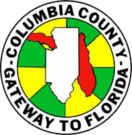Columbia County is committed to ensuring accessibility to this website regardless of disability. If anyone encounters a feature on this website that is inaccessible due to a disability, please contact the County Manager's Office and the Columbia County Board of County Commissioners at (386) 758-1005. You may also email that office at patrick_weaver@columbiacountyfla.com and provide a brief description of the inaccessible feature. The County will either correct the inaccessible feature or, if correction is not possible due to technical limitations, provide the desired information through alternative means.

Columbia County, FL uses javascript to enhance its website and provide the public with useful features.
Because of this, many features will not work. Please enable javascript
in your browser to get the best possible experience while on our site.
Page Not Found: Error 404
The file you are looking for may have been removed or renamed.
Back to Top
Copyright ©
Columbia County. All rights reserved.
Privacy Policy
Columbiacountyfla.com seeks to ensure that all content and information
published at this Web site is current and accurate. Links to external,
or third party Web sites, are provided solely for visitors'
convenience. If you notice any errors in the information provided on
this website please do not hesitate to let us know by contacting the
Columbia County I.T. department at
webmaster@columbiacountyfla.com
 Columbia County, FL uses javascript to enhance its website and provide the public with useful features.
Columbia County, FL uses javascript to enhance its website and provide the public with useful features.